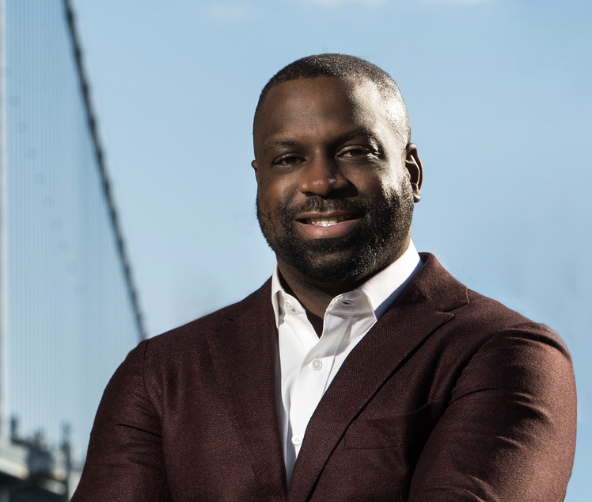Investing has the power to shape your financial future for the better. Knowing that your financial future is bright enables you to enjoy life more. How? Having the peace of mind knowing that your money is working hard for you makes your stress levels decrease, allowing you to be fully present whenever you’re with your loved ones or when you are relaxing all by yourself.
Investing is fundamental if you want to grow your wealth over time. While inflation erodes the purchasing power of your money over time, if you have enough money invested your returns can outpace inflation. Investing can set you up for a comfortable retirement as well. With the decline in traditional pension plans and uncertainty around social security, self-funding your retirement through investing is becoming all the more crucial. Apart from beating inflation and making sure you can retire comfortably, investing grows your wealth overall, giving you financial freedom and autonomy. Financial freedom offers you options like the ability to change your career whenever you please, start a business around your passion, or even retire early.
Although this sounds amazing and makes investing seem like a no-brainer, many people have trouble starting investing and thereby shaping their financial future. Because we see the power in investing and we want everyone to enjoy their spin on this earth to the fullest, our mission is to change that. We want to enable everyone to start investing and thus shape their financial future according to their goals and dreams.
In this blog, we will tell you step-by-step how to go about investing smartly. We start by explaining two crucial steps you want to undertake before you even invest a dollar. Then, we’ll lay out the four key steps that will set you up for almost guaranteed investing success. Let’s dive in!
Before You Start Investing
Before you even start investing, there are two crucial steps you want to undertake to make sure you’re ready. As a general rule of thumb, you want to have an emergency fund and no high-interest debt (or at least a detailed plan for the debt) before you invest even as much as one dollar.
First, Build Up Your Emergency Fund
An emergency fund is there to fund your life whenever something unfortunate happens that stops you from making an income. The general rule of thumb is that you want to have an emergency fund that consists of a total of six times your average monthly spend—three months if you have two reliable income streams. Then, whenever an emergency happens and no money is coming in, you can sustain your lifestyle for the next three-six months.
So, if you, on average, spend $2,500 per month, that means you want to have an emergency fund of 6 x $2,500 = $15,000 if you have one income stream. Having an emergency fund is important because you want to ‘set and forget’ your investments. If you put money into an investment and whenever something unfortunate happens you have to take this money out, you cannot take full advantage of the wonder of compound interest. You want to give your investments time to grow, and by having an emergency fund you’re more able to do so.
Then, Pay Off Your High-Interest Debt
If you have debt on which you pay a high interest rate, you might be paying more in interest than you gain on your investments. That’s why we suggest you first pay off any high-interest debt before putting a dollar into any investment. Debt is generally considered high-interest if the interest rate is higher than 8%. This is the cut-off rate because the average annual growth rate of the typical index fund is around 10%. If the interest rate on your debt is higher than the annual growth rate of your investment portfolio (all assets/index funds/stocks that you own), you’re still losing money instead of making it. So, to fully enjoy the gains of your investment portfolio, please make sure your high-interest debt is paid off or at least have a detailed plan for your debt.
The Four Key Steps To Smart Investing
Now that you know what to do before you even start investing, it’s time to make your money work for you. Below we lay out the four key steps that are the most guaranteed way to financial success in the long run.
Step 1 – Set A Clear Objective And Make A Plan
First, you want to set a clear objective and make a plan to get there. By knowing what you’re working towards and making a plan toward that goal, you can closely monitor your progress and adjust accordingly. One of the most common reasons for investing is for retirement. An example of a goal may then be to retire comfortably by the age of 67. If you’re currently 35 and plan to live until you’re 85 years old, you’ll need to invest $300 per month to live off $2,500 per month when you’re retired. Here’s a handy tool if you want to calculate exactly what you need to retire according to your standards!
Retiring comfortably by the age of 67 is a clear objective and investing $300 per month for retirement is a solid plan. Check out the tool to find out what you need! Of course, there are other goals you may have, like investing for the education of your children, buying a house, or reaching financial independence. Our advice would be to be very specific in your plan and realistic when you write out your goals. This allows you to monitor your progress and adjust accordingly.
Step 2 – Start Early And Be Consistent
After you know what to do and how you’re going to do it, you want to start as soon as possible and be consistent with it. The earlier you start, the more the power of compound interest can do its work. What’s compound interest? That’s when the interest you earn on your initial investments starts earning additional interest! The longer you invest, the more your money snowballs due to this powerful mechanism. Einstein wasn’t joking when he said that compound interest is the eighth wonder of the world!
Being consistent with your deposits is important as well. Investors refer to this as ‘dollar-cost averaging’. Dollar-cost averaging means that regardless of the state of the market, you’ll invest your monthly deposit. This will dampen the effect of market volatility, or in simpler terms: reduce the average cost of whatever you buy as an investment. Another reason to be consistent is that when you’re consistently investing, investing becomes a habit. And habits are darn difficult to break. To add to that, knowing you have a consistent investment plan and contributing consistently to it can provide peace of mind knowing that you’re putting money towards your goals. It’s one less thing to worry about.
Step 3 – Diversify Your Portfolio: Buy Index Funds
Your plan is in place and you’re ready to go. By now, you’re probably wondering what to buy. Our guidance would be to diversify your portfolio as much as possible. Let us explain exactly what this means.
When we say ‘diversifying’, we’re talking about making sure that you own a diversified set of assets. In other words, don’t put all your eggs in one basket. It’s highly unlikely that all stocks you own will decrease significantly at the same time, so by accurately diversifying your portfolio you’ll make sure the chance of a significant decrease in your net worth is slim.
But how do you diversify accurately? Great question! An easy way to make sure your portfolio is well diversified is by buying index funds instead of individual stocks. An index fund is essentially a big basket of several different stocks. By buying index funds instead of individual stocks, your portfolio becomes accurately diversified, which is a surefire way to see your money grow over time. Over the last 30 years, the average annual growth rate of the S&P 500 index (a basket of stocks that consists of all stocks listed on the S&P 500) was a whopping 10.7%! Investing in an index like that would be some smart investing! Want to learn how to invest in index funds? Perfect! I hold a free investing class every month. Save your seat here!
Step 4 – Avoid Emotional Decisions: Slow And Steady Wins The Race
Although it would be a smart move to invest in index funds, many people find it rather boring. Because these index funds move way more slowly than individual stocks, people may be more attracted to buying individual stocks. And while a sharp increase in the stocks’ value can greatly benefit you, owning only a small number of individual stocks makes your portfolio way more vulnerable to negative swings in the economy. This vulnerability does not hold as much for index funds. The mantra to remember here is ‘slow and steady wins the race’!
Seeing others make big bucks with individual stocks can make it tempting to make irrational decisions. But selling the portfolio you’ve worked to build up over the years and dumping all that money in one stock is not what most consider ‘smart investing’. Our guidance would be to avoid these types of emotional decisions and stick to your plan. How tempting it may be to get influenced by all the big wins you hear about, most people who share their big wins don’t mention their big losses. Don’t let yourself be swayed and stick to the plan.
Set It And Forget It
Investing truly has the power to shape your financial future. Being smart about it can set you up for a comfortable retirement while allowing you to live a stress-free and enjoyable life. Having the peace of mind that you’re working toward a secure financial future gives you one less thing to worry about. Investing is fundamental if you want to build wealth over time and achieve your goals around money. In this blog, we’ve explained why investing is important and how to go about it smartly, so you can be in charge of your financial destiny.
Before you even start investing, make sure you have an emergency fund in case an emergency comes up and your high-interest debt is paid off (or at least a detailed plan to pay it off). If you want to take full advantage of the power of compound interest, you need to let your money do its work, and not have to take it out to pay for everyday necessities whenever something bad happens. When you’re ready to start investing, think about what you want to achieve and craft a plan to get there. You want to start as early as possible and be consistent with it, so you can get a hold of your assets for the lowest average price. Make sure your portfolio is well-diversified, which you can quite easily do by buying index funds instead of individual stocks. When you finally have your money invested and it’s working hard for you, you want to do everything in your power to avoid emotional decisions. Therefore, the mantra for smart investing should be ‘set it and forget’. Invest your money, don’t think about it (unless something substantial changes in your life), and take charge of your financial destiny. Happy investing!
About the Author:

Marc Russell is a top financial educator and coach. After college, he climbed the ranks at top financial institutions including The Vanguard Group. Over his career, Marc earned his stockbroker and financial advisor licenses before he became a full-time business owner.
Despite his career success, Marc struggled with debt until he used his own financial tips to pay off $80,000. His business, BetterWallet, teaches new investors how to manage their money strategically. Marc’s work has been featured in numerous publications, including Time Magazine, CNBC, Harvard Business Review, Bankrate and USA TODAY.


